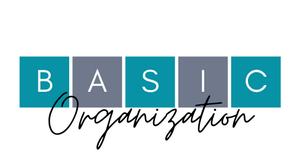The Secret to Conquering Your Paper Piles
The Secret to Conquering Your Paper Piles
Years ago, some people thought that the personal computer would make our society paperless. Boy, were they wrong! We have more paper in our lives than ever before. With mail, delivery services, printed emails, and information on the web, no wonder we have a hard time keeping up with the paper piles.
We have more paper in our lives than ever before. Share on XWhere do your paper piles collect? Where do you drop the mail when you walk in the door? Do piles of bills, catalogs, and magazines collect on the kitchen table? Do the school papers seem to multiply overnight? How about reading material that you plan to get around to one day?
There are a few simple things you can do to organize the paper piles and make it easier for you to find what you need.
Eliminate what you can.
Don’t print emails or information off the Internet unless you absolutely have to. Don’t keep junk mail lying around. Recycle or trash it. Give the kids the responsibility of processing paper that comes home from school. Don’t collect more reading material than you have time to read. By eliminating what you can from the start, you’ll have less to deal with.
Everyone needs a filing system.
The papers you keep need a home. It’s called a file cabinet. File your papers only when you are finished acting on them. You can think of these things as reference material. The statements for bills already paid, financial statements, personal papers such as birth certificates and medical paperwork, and insurance policies are all items that need to be filed. Make a file for every category of paper you have to keep, so you continue to easily file in the future.
Make an action area.
Collect all the paper that is left because you need to take some kind of action on it. Sort the papers by categories: to read, to pay, place a call, to send, get more information, etc? Arrange these papers by when you are going to do the action. Using your calendar can be very useful to accomplish your action items. Plan when each action is going to be done, and write it on your calendar. Are you invited to a birthday party next Saturday? Write down all relevant information on your calendar: when you will RSVP, when you will shop for a gift, the time and location of the party, etc. Now you can throw away the invitation. You don’t need it anymore.
For items that you want to keep, write the date you plan to do the action on each paper in your action area, and store them according to the date. So at the beginning of each day, all you have to do is look at the top of the pile and do what has that day’s date on it. Have a Pile for the File. The filing doesn’t have to be done every day. Just collect paperwork that will need to be filed in one area. Then file the paper in your filing cabinet at a later date.
In order to maintain your filing cabinet, you should plan one day a year to clean it out. If you are not sure whether certain paperwork needs to be kept, ask yourself if you can find the information somewhere else. If so, let it go!
Want to read more? Try 10 Steps to Reduce Paper Clutter or How To Declutter Your Piles Of Paper.
Subscribe by email
Enter your email address to subscribe to this blog and receive notifications of new posts by email.
Janet Schiesl

Janet has been organizing since 2005. She is a Certified Professional Organizer and the owner of Basic Organization.
She loves using her background as a space planner to challenge her clients to look at their space differently. She leads the team in large projects and works one-on-one with clients to help the process move quickly and comfortably. Call her crazy, but she loves to work with paper, to purge what is not needed and to create filing systems that work for each individual client.
Janet is a Past Board Member of the National Association of Productivity and Organizing Professionals and a Past President of the Washington DC Chapter of NAPO were she has been named Organizer of the Year and Volunteer of the Year.

Janet Schiesl
Janet has been organizing since 2005. She is a Certified Professional Organizer and the owner of Basic Organization.
She loves using her background as a space planner to challenge her clients to look at their space differently. She leads the team in large projects and works one-on-one with clients to help the process move quickly and comfortably. Call her crazy, but she loves to work with paper, to purge what is not needed and to create filing systems that work for each individual client.
Janet is a Past Board Member of the National Association of Productivity and Organizing Professionals and a Past President of the Washington DC Chapter of NAPO were she has been named Organizer of the Year and Volunteer of the Year.

Great advice, Janet. I like your idea of assigning a date to the paper and then organizing the papers by the due date.
Diane, I find that some of my clients need to see their deadlines.
I love everything you have here in your action area. There is a magical connection between the calendar and the to-do list. I often say, “What gets scheduled gets done.” Great tip about putting all of the relevant information right into the calendar. When I have a place to be, I try and record the phone number of the location in my calendar, just in case I have a problem, I can easily find the number I need to call or text.
Seana, I love working with clients to getting everything on their calendar and showing them how powerful that can be. I like adding the phone number to your calendar info.
These are fabulous tips! Like you, I also suggest separating action papers into categories to my organizing clients. Being able to easily access all items you need to pay, reading material, calls you need to make, etc. can really boost productivity and lower the stress of paper piles.
I agree. Sorting tasks makes everyone more productive.
Since the kids are going off to college, paperwork for the kids’ loans and schooling are in a separate area so they can we can see them easily. I do find that filing papers away can be a hassle so I like to have a “to be filed” bin and when the bin gets full, I spend 15 minutes and file them away. This usually happens once a month which works for me.
I like the file bin! It’s not necessary to file each piece of paper immediately. Batch your filing so you can be more productive.
I have a three-drawer filing cabinet which is mostly full of old stuff. I hardly generate any paper anymore. I am tempted to put the whole thing in storage and see what (if anything) I actually miss having on hand!
In my experience, one file drawer is enough for people who are more or less paperless. There are just a few documents that you NEED to keep.
As someone that’s been helping others get organized for over 26 years, there is no question that paper has been a consistent challenge for many of my clients. What’s interesting to see now is that the younger my clients are, the less paper they have. They are much more comfortable with digital media as a way to process and keep records. So while they aren’t 100% exempt from paper, their paper organizing challenges are less of an issue. However, those of us that are a certain age (myself included) paper systems and organizing continue to be a main area to manage.